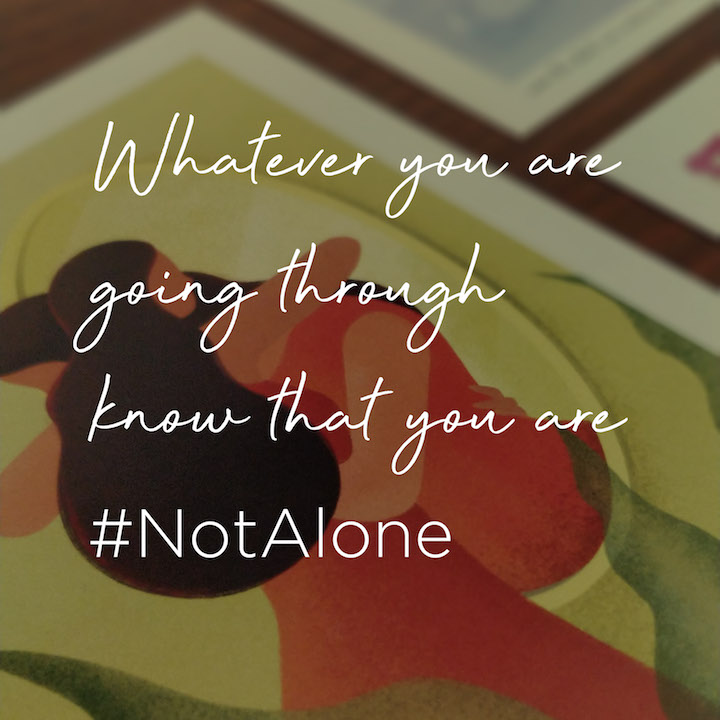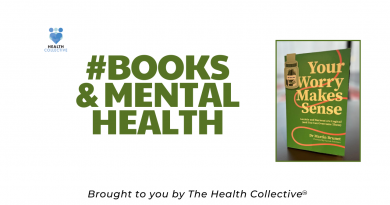Unpacking Love and Life: A Review of Red, Green, and Sometimes Beige
By Asma G

“It feels like whiplash; for 20 years, my parents forbade me from dating and pushed me to focus on achievements, but suddenly this year, the only topic they’re interested in talking about is whether I’ve met someone I like enough to consider getting married! I told them that I might get promoted soon but they didn’t seem to care!” my friend Ananya exclaims angrily over brunch one Sunday morning.
“It’s because your 30th birthday is coming up soon, isn’t it?” I ask with a sense of dread.
Ananya nods and I huff in annoyance, unsure of how to make her feel better.
“What do you plan to do for your birthday? We should do something fun!”
“I’m actually dreading my birthday because I know how much my parents will pressurise me about getting married after I turn 30,” Ananya replies. “Why can’t my life be like the movies? Why can’t I meet someone amazing, fall in love, get married, and live happily ever after?”
I can’t blame Ananya for her wishful thinking; she’s had a spate of bad experiences over the years while meeting men her parents have deemed marriage material. Some men have been intimidated by her drive and uncomfortable with the fact that she earns more than them, while some men have told her in no uncertain terms that they expect her to take care of their parents and the household.
I always falter when female friends ask me how they can be certain that they’re making the right decision while choosing a partner. Some have told me how there’s no spark, no instant connection, and how they fear that might be a sign they’re not choosing the right person. I understand their dilemma but have nothing useful to offer except to commiserate about how scary it must be to make such a big decision. A close female friend lamented that we should have focused less on being “toppers” and more on ignoring our parents’ rules around dating when we were younger because that way, we’d have a better understanding about relationships as adults, and wouldn’t feel like we were being thrown in the deep end.
Social media has played a contradictory role through all of this turmoil; on the one hand, it has proven beneficial by democratising theories about relationships such as attachment styles and love languages, on the other hand, it has led to people bandying about terms like ‘red flag’ and ‘narcissist’, without fully understanding what they imply.
Kasturi Mahanta, popularly known as @heymisstherapist on Instagram (where she has over 100K followers), seeks to debunk myths about romantic relationships in her book Red, Green, and Sometimes Beige, published by Simon & Schuster India in October, 2024. Mahanta is a Counselling Psychologist specialising in Marriage and Family Therapy. Her experiences in her own relationships and her work as a therapist with couples fuelled a desire to help others build healthy relationships.
ALSO READ:
The book begins with Mahanta exploring how her childhood impacted her view of romantic relationships and shaped her subsequent relationships. Mahanta writes of growing up in Assam in the 90s and early 2000s with limited sources of information about relationships— the movies (actor Shah Rukh Khan gets a notable mention), TV (which was highly censored), radio, and the agony aunt sections of magazines like Reader’s Digest and Women’s Era—and how that skewed her understanding of relationships, ultimately resulting in repeated confusion and heartache.
Through the book, Mahanta explains a number of therapeutic concepts, including attachment styles, Maslow’s hierarchy of needs, stress responses, red, green, and beige flags, trauma bonding, triangulation, and love languages – and the impact they have on romantic relationships. In each chapter, Mahanta introduces a new person (often, but not always a fictional client) and examines the challenges they face in their romantic relationships and dissects their actions.
THE SOUTH ASIAN CONNECT
While numerous books about relationships exist, few are by authors from South Asia, with a deep lived understanding of the socio-cultural context. As a result, quite often their insight isn’t particularly useful or applicable to readers from our region. One widely recognised example of this disconnect is as pertains to boundaries. Boundary-setting is very different in an Asian household compared to a western household, something comedian Sashi Perera (@sashbomb) jokes about and terms ‘browndaries’.
Red, Green, and Sometimes Beige is peppered with culturally-relevant examples—Harsh, a client, describes growing up in a joint family with a temperamental grandfather, and explains how his entire family scheduled their lives around his grandfather’s life, constantly catering to his temper and his needs; Ankit, another client, describes his love-cum-arranged marriage, clothing restrictions his family expects his wife to follow, and his family’s interference in his marriage–which will likely resonate with a lot of readers who will either recognise such dynamics in their own families or in those of friends and relatives.
Joint families, cultural restrictions around clothing and triangulation are not universal occurrences and as such, aren’t often explored in books about relationships. Seeing such issues mentioned and their impact analysed is incredibly important and hopefully, it will allow readers to feel understood and represented.
Mahanta describes triangulation, a common occurrence in Indian families and possibly the bedrock for most Indian TV shows, writing, “Triangulation is when any third party occupies a pivotal role in the quality of the relationship between two people. The third party has a lot of power over how the relationship between the other two turns out.”
She goes on to explain the distinct dynamics supporting triangulation in South Asian communities, writing, “One of the key factors contributing to triangulation in these cultures is the value placed on elder advice and wisdom. Elders are respected figures whose opinions are highly regarded and sought after in matters of importance, including relationships. However, despite the intention to seek guidance and support, the involvement of elders in intimate details of couples’ lives can sometimes lead to unintended consequences.”
Mahanta also includes a list of signs readers can use to gauge whether a “helpful” family member is actually doing more harm than good.
RED OR GREEN FLAG?
As the title of the book suggests, Mahanta also sheds light on red, green, and beige flags. Describing the red flag ‘isolation’, Mahanta writes, “Isolation in a relationship refers to the deliberate act of either encouraging or experiencing a withdrawal from friends and family, thereby limiting essential social interactions. This red flag is marked by attempts to control and manipulate an individual’s social sphere, often driven by a desire for dominance or to exert influence.”
She is quick to clarify the difference between a partner being introverted and a partner intentionally isolating a person, an important differentiation. “Introverted behaviour is a personality trait involving a preference for solitude, and isolation behaviour involves intentionally distancing oneself from others. The major difference between the two is intention. Isolation is usually done with the intent of making it seem like the connection or our partner is the only support system and to ensure you are completely dependent on them.”
The book contains a number of exercises with questions readers can introspect upon and answer to gain deeper insight into their behaviour in romantic relationships. The focus of these exercises is wide-ranging; one exercise is tailored to help readers identify their stress response, another is meant to help identify limiting beliefs about relationships, while yet another exercise focuses on identifying red, green, and beige flags in relationships.
CONCLUSION
I would recommend Red, Green, and Sometimes Beige as a quick primer to anyone seeking insight into romantic relationships. Given the breadth of the topics covered, the book does not go into too much detail about any of the topics covered, but manages to provide a bird’s-eye view of the issues that commonly arise.
Mahanta also divulges that her inner critic is named Komolika (a villainous character on a popular Hindi TV show). It’s a detail that makes me chuckle; the person behind the Instagram handle @heymisstherapist feels like a long-lost friend.
Bio: Asma G is a feminist writer with an interest in public policy and mental health. She can be reached on Instagram at @asmag7



